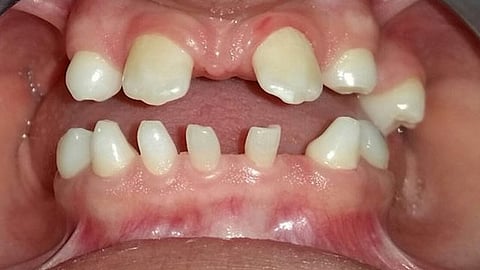If this study yields promising results in human clinical trials, it could be immensely beneficial for young patients suffering from genetic disorders affecting tooth development. Moreover, adults or older individuals who often present to clinics with multiple missing teeth or even a complete absence of teeth, due to various reasons, would also benefit. Currently, the conventional treatment for such cases involves the provision of an acrylic complete denture or an implant-supported denture. However, these methods come with various risks and limitations, especially depending on bone health. If tooth regrowth becomes a viable treatment option, many of these risks can be avoided. However, it's imperative that dental practitioners understand and correctly implement the drug's generalization and specific application to individual patients. Another consideration is the time required for tooth regrowth and its associated costs. The affordability and duration of the treatment remain uncertain.
(Rehash/Dr. Meghana Pasala, BDS)


